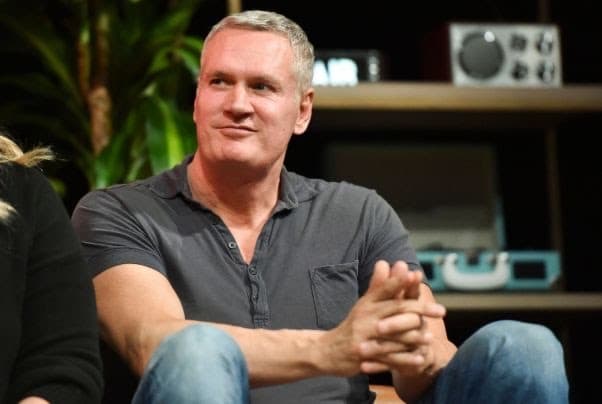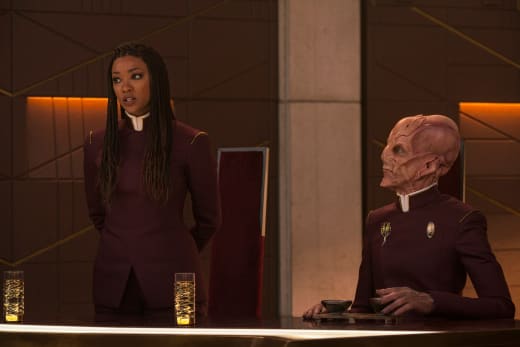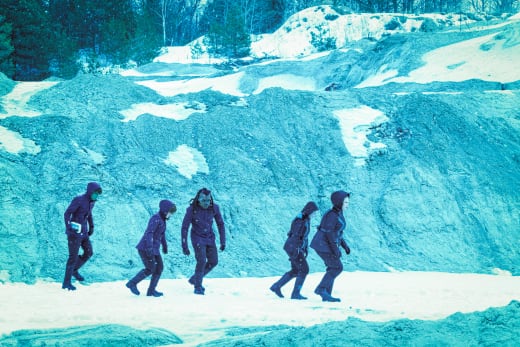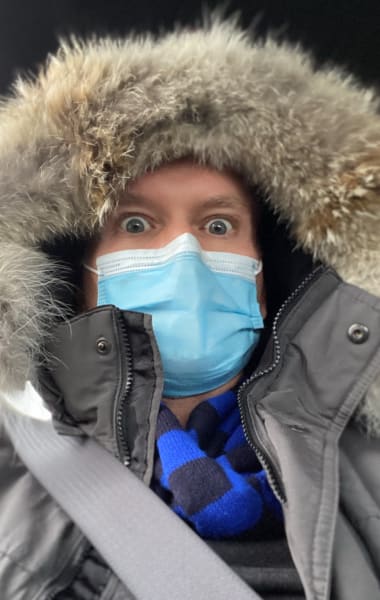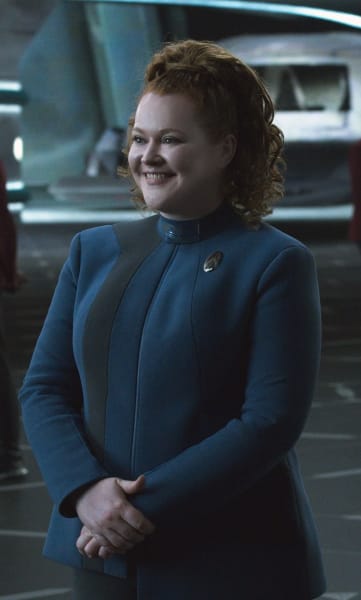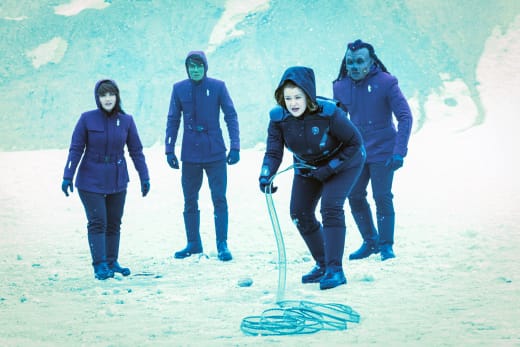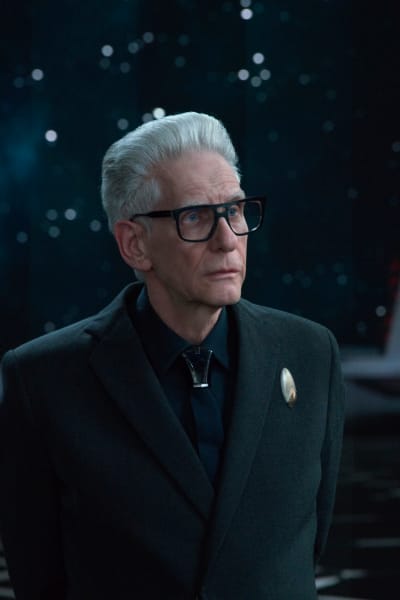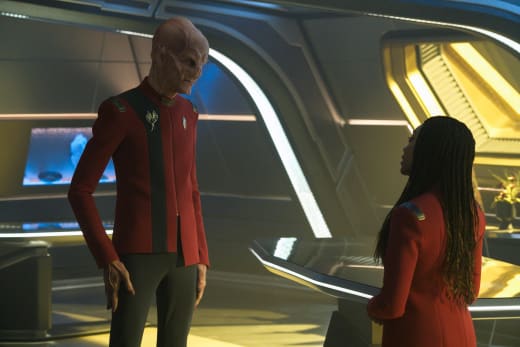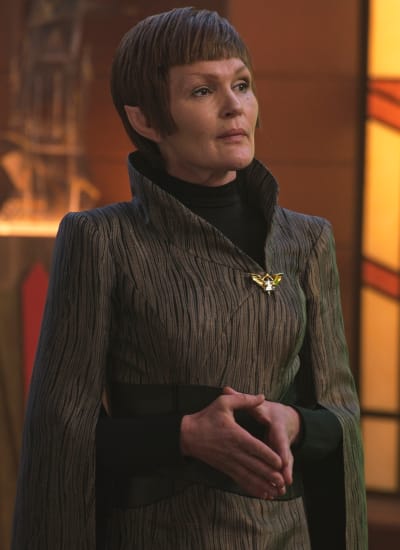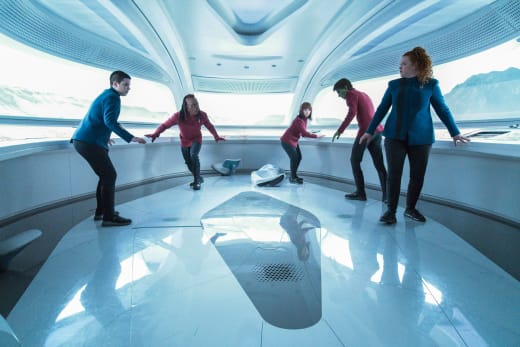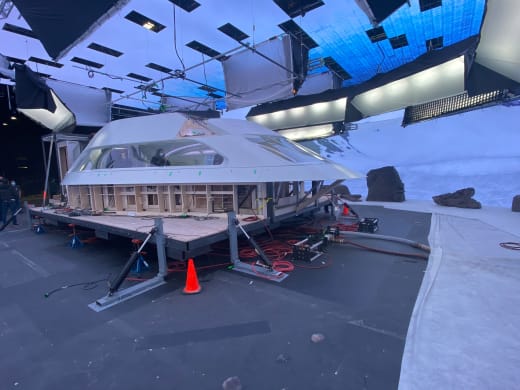John Ottman is, unquestionably, a workhorse talent in Hollywood. For decades, he has been the creative genius behind musical scores for dozens of major motion pictures, including Valkyrie, Kiss Kiss Bang Bang, Gothika, The Usual Suspects, as well as all the Bryan Singer X-Men films.
In addition to and often at the same time as (more on that later), he has earned great acclaim as a film editor. In 2019, he was awarded the Academy Award for Best Film Editing for his work on Bohemian Rhapsody.
So if he’s not the first name to come to mind when you think, “DIRECTOR,” you could be forgiven. However, after taking the lead on Star Trek: Discovery Season 4 Episode 4, we will all be looking and hoping for him to return to the chair again soon. (#SPOILERALERT if you haven’t watched the episode yet.)
Speaking with TV Fanatic from his home in Los Angeles, Ottman is forthright about the path his career has taken so far.
“I was always behind the scenes. I was always sidetracked, as it were, by my servitude [laughs] for twenty-five years doing the X-Men films and so forth. I don’t regret that at all. It was a wonderful experience.
“But every time I would start developing a project for myself to direct, [there was] the dangling carrot of, ‘Hey, you want to write a giant score for a big summer release movie? And you also get to edit it!'”
Ottman explains the double-duty that he often signed up for. “The ‘blackmail’ situation with Bryan Singer was that you cannot ever just score one of [his] movies unless you’re also taking over as the editor. So I was doing double tasks all the time, which then would keep me from making that move to directing.
“Now that I’ve got myself to a place where I can afford to say no to those other things, I’m just focusing on the things that make me happy.”
And he’s not waiting around for happy-making things to land in his lap. He’s actively pursuing the projects he wants.
“So what I did was, I went and met Alex Kurtzman and told him what a huge fan I was of Star Trek and [how] one of my fantasies is to be a recurrent director on a Star Trek show.
“I would love to come back and do another one and have that happen, but at least I got to do one. What’s great about it is that it was probably the most Star Trek-like episode in a while because it was almost stand-alone.
“It’s also about classic Star Trek themes of coming together despite our differences, and it had a political storyline that was independent of the long story of Season 4 of the DMA. So I was thrilled to have been dealt this episode.”
Television is a very different beast from film, wherein sometimes, the project (or episode) you’re planning for isn’t the one you end up shooting.
“The funny thing is I prepared — mentally and with a shot list in my head — for another episode, and there was a mistake. It was way before shooting, way before even pre-production, but I was in my headspace for another episode.
“Then I was told, ‘Oh, there’s a screw-up. You’re actually doing 404.’
“When I had read 404 — even though I wasn’t doing it — I was like, ‘Wow, that looks both fun and totally terrifying because it looks like a high-demand episode.’ And, as it turned out, I end up getting it.”
Star Trek: Discovery Season 4 Episode 4 includes a survival adventure mission when Tilly, Adira, and three Starfleet cadets crash land on a Class L Planet. The dangerous and bleak environment was as challenging behind the scenes as it was on-screen.
“For the snowy scene, we shot in a rock quarry about an hour outside of Toronto. And when it’s dusted with snow, it has this illusion of looking like the Andes Mountains, but it’s actually just this little rock quarry. The little hills that the bulldozers push up look like they’re massive, but they’re really not. It’s an illusion.
“I was fortunate that it got dusted with snow before we went because we had a bunch of warm weather during pre-production. I was freaking out that we’d just end up in a big mud sludge out there.
“Then we ended up getting high winds on that day, so I got what I wanted because I wanted to have a very inhospitable place. I [had] brought out wind machines, and then, when we got there, the winds were so high, we had to abandon the camera crane. It was too dangerous to shoot.
“We had delays, of course, and then something flew in someone’s eye. Y’know all these kinds of things happen when you’re on location.”
One would assume the Ni’Var summit scenes would be an easier location shoot, comparatively. But, as it turns out, no.
“The Ni’Var set was out at a university in Toronto, and the irony of it is that there were these massive windows — three hundred and sixty degrees around — so we might as well have been outside, chasing the sun the whole time.
“It was not a controlled environment either, so no matter where I went, it seemed like we had no time to shoot, which is very common of course in any show, but I was dealt a really challenging episode.
“I think me being a hyper-organized freak got us through getting all the emotional beats I needed to get. With the storyboards I had made, [we managed] without having to compromise too much.”
Ottman’s episode is a critical point in the narrative arc of Lieutenant Sylvia Tilly, a crew member who has been with Discovery from the very beginning, undergoing incredible character development over the years.
This season, she has been dealing with personal and professional uncertainty resulting from the trauma she suffered at the end of Star Trek: Discovery Season 3.
Ottman was delighted to work with Mary Wiseman for this crucial episode in her character story.
“Mary’s awesome because she’s like a little filmmaker. I told her, ‘You’re like a filmmaker-actor because you get what — not only what the scene’s about, of course, as any actor should — you get what I’m trying to do as a director.’
“She could immediately conceive what I’m trying to achieve, and she would make sure we got that. In that way, it was a thrill working with her. She’s so instinctual. She knows what the director’s trying to get. If the director communicates that well, which I think I did. [laughs]
“It was not a fun episode for her [or] any of the actors placed out in that snow because as cold as you think it made you feel, it was colder.
“Literally, I put my gloves up against the heater, and I could not feel the heat. My fingers were still numb. And that was inside the tent where I was directing, not out in the wind where the actors were.
“It was brutal for them. So I felt for them out there because they had to stand up for a long time, giving those lines when Harral’s talking about his past and Adira’s telling [Gorev] about who Harral’s father was. So they’re standing out there for these long dialogue scenes, freezing their asses off.
“I got to give it to the actors who played the cadets. They really brought it and did such a good job.
“It’s hard when characters have never been introduced at all. They don’t have a tremendous amount of screentime to make an impact and have people understand them and relate to them quickly. That was the hardest thing to pull off in the limited time they had to endear themselves to an audience.”
Dr. Kovich returns for the first time this season with “All is Possible,” portrayed, as always, with elegant precision by award-winning director David Cronenberg. What was it like for Ottman, directing a director of such immense stature?
“Intimidating, of course, because The Dead Zone is one of my all-time favorite movies. It’s one of those go-to dissertations on filmmaking itself for me and how to pull off certain things that are masterfully done.
“And so, just to walk up to him… Of course, I bowed, y’know, and he said, ‘Well, I can never hear it enough.’ [laughs]
“I would’ve liked to have hung out more with him and Mary. But because of COVID and the strict requirements with the masks, you couldn’t mingle as much as you wanted to. I’m hoping I can go back and do another one where we can mingle properly.
Having followed the show from the beginning, Ottman is intimately aware of how the relationship between Saru and Burnham has evolved and grown over the seasons. As they worked to solve the political dilemma at the Ni’Var summit, he saw them very much acting in tandem with each other.
“Absolutely. They’ve always been [playing] musical chairs. When Saru was the captain, Burnham served him, and now, he’s serving her.
“They’re always a team together. No matter who is serving [whom], there’s this ultimate respect the two of them have for each other. And they’re sort of one in that regard, and they work as one even when they’re separated.
“I just learned from the writer the original draft didn’t even have Saru joining Burnham on the planet. He was on Discovery. I’m so glad that got changed before I got the script where Saru’s engaged. It makes so much more sense.”
A fascinating new dynamic introduced at the summit is the reserved but genuine affection between Saru and President T’Rina.
“This episode dealt with a lot of subtleties, like the subterfuge with the political thing with T’RIna and Rillak, their little plan. [With] all these very minute subtleties, [it was about] not going too far in one direction or the other.
“And that was the same thing with T’RIna and Saru’s budding romance, or whatever it may be. To not go too far with it. To give a suggestion that there’s some interest.
“I just love that scene between the two of them in the meditation room. As short as it is, it’s endearing, especially when she says, ‘Your eyes are still open, Saru.’ That was a wonderful little moment.”
With its various sets and locations, can Ottman pick a specific scene or locale from “All Is Possible” that was his favorite to shoot?
“Even though it was very complicated and cramped, I guess it would be to be in that shuttle because I felt like when we placed that shuttle on the air wall and turned the screen on, with the snow all around us, it really felt like we were there.
“Except that we were warmer. We weren’t out in the snow. It wasn’t quite as brutal as being outside.
“It reminded me more of a classic Star Trek episode than any of the other scenes, and so that was my favorite area to shoot.”
A quick personal aside: If you’ve read our review of this episode, you know it had a pretty visceral effect on me. I couldn’t possibly pass up the opportunity to let the director know that watching it left me in a well of post-credit cathartic tears.
Ottman seemed pleased that his creation had elicited such a dramatic reaction.
“That was the goal, so I guess it worked for you.” Oh, yeah. For sure.
John Ottman’s Star Trek directorial debut, “All is Possible,” is available now to stream on-demand on Paramount+. May it prove to be one of many.
New episodes of Star Trek: Discovery are available Thursdays on Paramount+.
Diana Keng is a staff writer for TV Fanatic. Follow her on Twitter.
